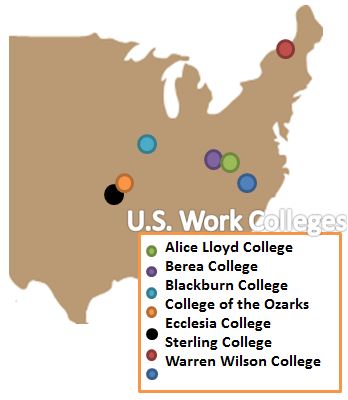3. Compare Schools
 In early 2013, the U.S. Department of Education released its own database, the College Scorecard, in hopes of making post-secondary school information easier to locate and help students select the best institution. Currently, the database lacks accurate employment information for specific fields and the Occupational Handbook should be used for that information until it is updated. However, it is a great tool for comparing the quality of different schools.
In early 2013, the U.S. Department of Education released its own database, the College Scorecard, in hopes of making post-secondary school information easier to locate and help students select the best institution. Currently, the database lacks accurate employment information for specific fields and the Occupational Handbook should be used for that information until it is updated. However, it is a great tool for comparing the quality of different schools.
Quality institutions are measured by their graduation and loan default rates. A student’s likelihood of graduating on time and ability to pay off student debt depend directly on their employability. It is a school’s responsibility to make graduation and loan default rates easily accessible and transparent. However, locating it on college websites can be quite a challenge. College Scorecard makes it easy to find the graduation and loan default rates of different institutions in one place.
4. Take a Gap Year
A gap year is taking a year off between high school and college. Gap years, deferred enrollment and gap fairs are becoming increasingly popular in the United States. Many colleges support taking a gap year by allowing students to defer enrollment for a year after already being accepted. Students who take this deferred year have a chance to volunteer, work or travel before returning to a structured educational environment. Gap fairs are designed to promote and locate programs that help students gain experience and an improved sense of self during their time off. However, some students decide to spend their time taking classes and improving their grade point average for a second chance at applying to a better school.
Avoid Burnout
After a gap year, most students find themselves better prepared to handle the stresses of post-secondary education. Through experience and time off, the majority of gap year students actually end up confirming their choice in major and career, which helps them be more focused and motivated in their studies. These students are also less likely to fall into an indecisive pattern of switching majors and more likely to graduate on time.
Gain Work Experience
Gap years are largely focused on experiencing as much as possible within a year and, in doing so, help students better define their personal goals. Additionally, students can get a jumpstart on their resume and work experience. Some focus on finding a job in order to prepare for future educational expenses and high-interest loans.
5. Work through College
Graduating on time is just one way students can reduce educational debt after graduation. Another way is to work through college. In a traditional sense, this means picking up a part-time job around campus or working over breaks when school is not in session. Along with providing a little extra financial padding, working through college is known to help build a student’s resume and make them a more desirable employee. Overseas and in the United States, there are Work Colleges that emphasize this important relationship between education and work-related experience for a student’s future.

Unlike traditional universities, Work Colleges divide a student’s education in half, splitting it evenly between time spent on their studies and on the clock. Students are expected to spend around 15 or 20 hours a week focused on classwork and then another 15 or 20 hours gaining valuable experience as an employee. Not only does this help prepare students for different professional environments after graduation, it also helps them graduate without the weight of extra student debt. Work College students are allowed to apply their work-related credits and hours toward their tuition, which literally allows them to work their way through school.
In the United States, there are seven accredited Work Colleges that provide both a liberal arts and a debt-free education. Potential students can earn a bachelor’s degree in popular subjects, while also gaining experience through a variety of positions within a community. Available positions vary by college and are usually offered in a variety of industries, such as hospitality, food service, education and social services.
